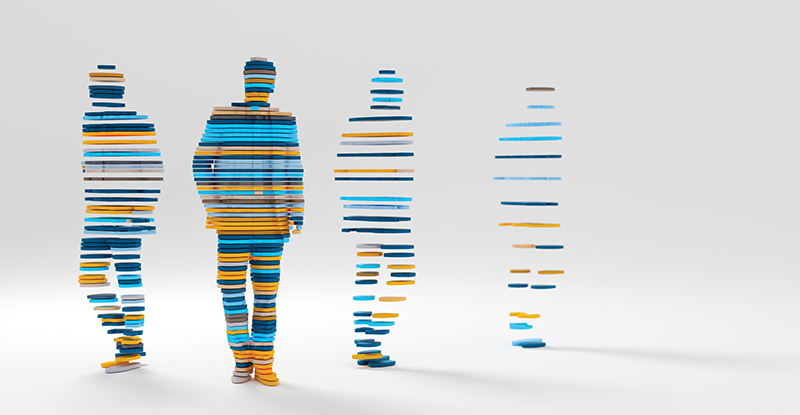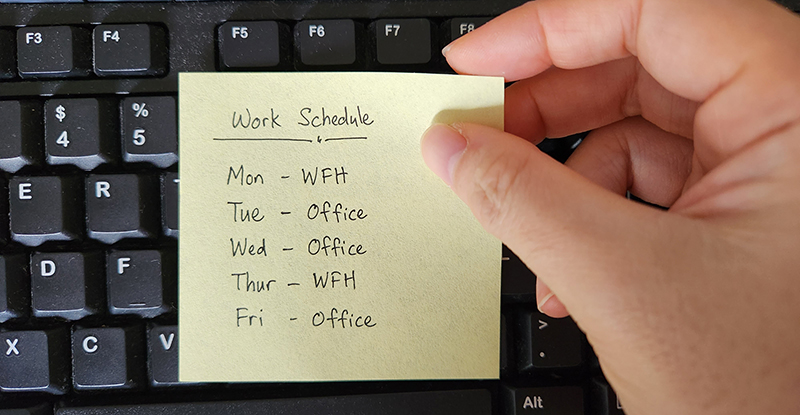
“Change has never happened this fast before, and it will never be this slow again.” - Graeme Wood, digital entrepreneur
For most of us, this quote is unnerving. If I’m having trouble keeping up with it all right now, how will I ever cope if things change even faster?
Why many of us experience change negatively
The very notion of progress means that things change. Innovation often makes the old way of doing something obsolete. Yes, much of the progress we experience in both our personal and professional lives come with incredible benefits. Changes in technology make things we once only dreamed of into day-to-day realities. Communication is faster and easier. Information is more accessible than ever before. So why would we resist these changes?
Here’s why: Our palaeolithic survival brain can interpret changes in our lives as threats to our need for certainty. If there are too many changes, we feel destabilized or even overwhelmed. This can show up in our lives as frustration, anxiety, mistrust, and conflict. To successfully navigate a rapidly changing world, we need to learn how to manage our survival brain to reduce its innate threat response, allowing us to see wiser and more creative options.
Finding stability amid change
While technological innovation is continuously bringing change into both our personal and professional lives, there are still many aspects of life that remain constant, and focusing our attention on these constants can have a stabilizing effect on our anxious mind.
Among these constants are our innate needs to positively contribute to the lives of others and our desire for human connection.
Here are two ways we can satisfy both of these needs within a constantly changing environment:
1. Finding meaning in our work and home lives – The more we can see the big picture, the easier it is to see the value we’re contributing to the lives of others both professionally and personally. For example, learning a new software program at work may be frustrating, but if you envision the benefits that using this new software will have on the services you provide to your clients, you’ll see why your efforts are worthwhile.
The same can be said about your personal life. Sure, trying to figure out how to use a new virtual assistant program such as Alexa or Google Assistant may seem overwhelming, but think of the added efficiencies this technology can provide to you and your family.
2. Connecting with others – In our increasingly digital world, we need human-to-human connections and meaningful relationships more than ever. Making time for and fostering relationships within our teams, families, and communities can create a sense of security amid change. Carve out time to meet someone for a coffee. Go to the lunch room and sit down with your colleagues instead of working through lunch at your desk. Proactively engage in a mentoring conversation with a younger colleague.
Genuinely connecting with others reminds us of our shared humanity, and it benefits everyone. Also, the stronger your personal relationships, the easier it will be to manage change together.
Training your brain to be more agile
In his book David and Goliath: Underdogs, Misfits, and the Art of Battling Giants, Malcolm Gladwell provides a surprising new perspective on the parable we thought we knew. The small boy David, armed with only a staff and sling, confronts the large, heavily armoured, and yet-undefeated Goliath. But David, who is typically portrayed as an underdog ill-prepared for battle, does not engage in traditional hand-to-hand grappling and instead takes Goliath out with a single shot from his sling.
As Gladwell tells it, if we knew what David’s mindset was going into battle, we wouldn’t be overly surprised at the outcome. This is because David doesn’t approach the battle with a one-size-fits-all mentality. Instead, he examines the situation from a number of different perspectives and finds the solution that works for him.
Essentially, David has an agile mind, and this is key. Whenever we find ourselves repeatedly battling the same proverbial giant with our tried-and-true tools, we are essentially operating on autopilot. Autopilot is our brain’s instinctive ability to learn a pattern, develop a skill, and turn it into a habit that can be repeated without much thought or effort. This ability generally serves us well, until a situation arises that shakes things up.
Tools that can help increase mental agility:
- Be curious – Don’t be as quick to revert to your usual way of solving a problem, particularly if that approach hasn’t been working lately. Often in frustrating situations, we dig our heels in and try to force the world to co-operate. Instead, be open to new ways of thinking.
- Challenge your assumptions – You may believe, for example, that people can’t work productively from home, that standard work hours are when people are most productive, or that financials only need be reviewed quarterly. Our beliefs and the assumptions behind them are endless, and our days are filled with activities that support our assumptions. Goliath assumed hand-to-hand combat was the most effective way to win the battle. David saw things differently.
- Ask different questions – Learn to ask different questions. For example, ask “What if we had half the time (or resources) we thought to do this?” “How else could we view this situation?” “What are people in a completely different industry doing?” “How would my mother approach this problem?” Different questions will open your mind to curiosity and free you from seeing only one course of action.
Why mindfulness?
Effectively adapting to change starts with understanding how our palaeolithic brain works and remembering that it can interpret too much change as destabilizing, throwing us into fight or flight mode.
This reactive mindset greatly compromises our ability to see options and to be creative or innovative. We need to learn how to pivot with change rather than fighting it—to see our changing world through fresh eyes and adapt, as resistance and frustration only waste precious energy and resources.
More and more leaders are turning to mindfulness skills to help them manage their reactive brain, as mindfulness teaches us how to be more present and aware of our thoughts and emotions, and, accordingly, less judgmental or rigid in our thinking and behaviour.
Mindfulness helps leaders learn to push “pause” and stay open and curious. These are the skills that are helping leaders become more agile and resilient in their world. What skills do you need to thrive in yours?
Scott Orth, M.Sc., CPCC, is a mindfulness and resiliency trainer and coach who gives leaders and busy professionals the tools they need to thrive in an often chaotic and distracting world. He was previously the national HR leader for one of Canada’s largest employee-owned engineering and science consulting organizations.



